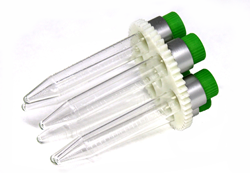Diagenode has provided a Bioruptor® Pico demo instrument to us for 2 weeks in September. We were getting very reproducible results between different tubes in the same sonication as well as between replicate experiments. We have obtained considerably improved results especially for cross-linked chromatin from mammalian cells that has always been a problem for us with the old Bioruptor. A bonus also was a reduced sonication time, although the preparation time is slightly delayed due to the glutinous nature of the beads.
Dr. Tatyana Nesterova, Department of Biochemistry, University of Oxford
-
产品
剪切技术
Tagmentation
Chromatin studies
DNA methylation
- Bisulfite conversion
- Methylated DNA Immunoprecipitation
- Methylbinding domain protein
- Hydroxymethylated DNA Immunoprecipitation
Genome editing (CRISPR/Cas9)
Antibodies
- All antibodies
- Sample size antibodies
- ChIP-seq grade antibodies
- ChIP-grade antibodies
- Western Blot Antibodies
- DNA modifications
- RNA modifications
- CRISPR/Cas9 antibodies
- CUT&Tag Antibodies
NGS Library preparation
- Library preparation for ChIP-seq
- Library preparation for RNA sequencing
- Library preparation for DNA sequencing
Automation
Reagents
- 服务
- 研究领域
- 资源
- 公司
-
联系人


